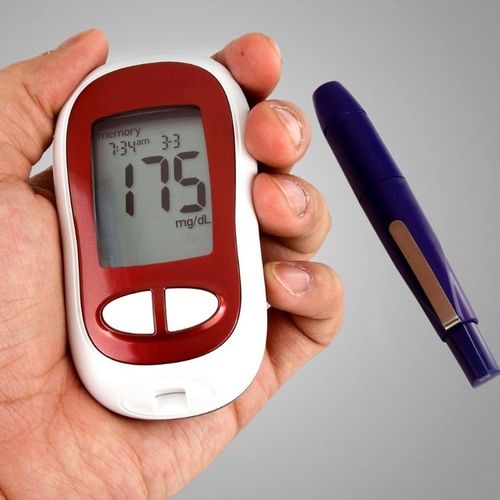Blood sugar levels are the high end of "normal," coupled with other risk factors for type 2 diabetes, may help identify apparently healthy men who are at an increased risk of the disease, a new Israeli study suggests.
The Study
For the study, the researchers obtained fasting glucose levels for more than 13,000 men from the Israeli Defense Forces, all between the ages of 26 and 45. During rhe average 5.7 year{ of follow-up, 208 of the men were diagnosed with type 2 diabetes.
Men who had fasting blood sugar levels at the high end of normal-95 to 99 milligrams per deciliter (mg/dL) of blood-had approximately three times the risk of developing type 2 diabetes as men who had blood sugar levels that were less than 81 mg/dL.
Men who had other risk factors, such as obesity, as well as high-normal blood glucose readings were even more likely to develop type2 diabetes. Obese men who had fasting glucose levels between 91 and 99 mg/dL had eight times the risk of developing the disease, compared with non obese men who had blood glucose readings of less than 86 mg/dL, the study found.
High triglyceride levels and a family history of the disease also increased the risk of diabetes for those men who had high-normal blood sugar levels.
Study author Dr. Amir Tirosh, an internist and researcher at the department of internal medicine at Sheba Medical Center, says he believes the study's findings also apply to women.
Additional Risk Factors
The National institute for Diabetes and Digestive and Kidney Diseases considers normal fasting blood sugar to be below 99 mg/dL. Fasting blood sugar between 100 and 125 mg/dl is considered prediabetic, and above 125 mg/dL is diabetic. However, the study suggests that these current standard guidelines are not appropriate for everyone.
"The results suggest that a 'normal' glucose level [one that is not associated with increased diabetes risk may have to be defined in a more individualized manner depending on a person's additional risk factors," says Tirosh.
"People and physicians should not look only at the current definition of normal and abnormal blood glucose levels when assessing an individual's risk to develop diabetes. A careful interpretation of the body mass index, the triglyceride level and the patient's family history of diabetes is [also] needed in order to better identify those at high risk," Tirosh adds.
"Identifying individuals at high risk for diabetes, particularly among young adults, will hopefully prove beneficial in reducing the epidemic proportions of the disease," says Tirosh, the former head of research and project development section of the Israeli Defense Forces Medical Corps.
The new study suggests that more people may be prediabetic even if their glucose levels are in the normal range. If these people are identified early, they can take steps to reduce potential health problems. Those steps can include exercise, improved diet and/or medication.
